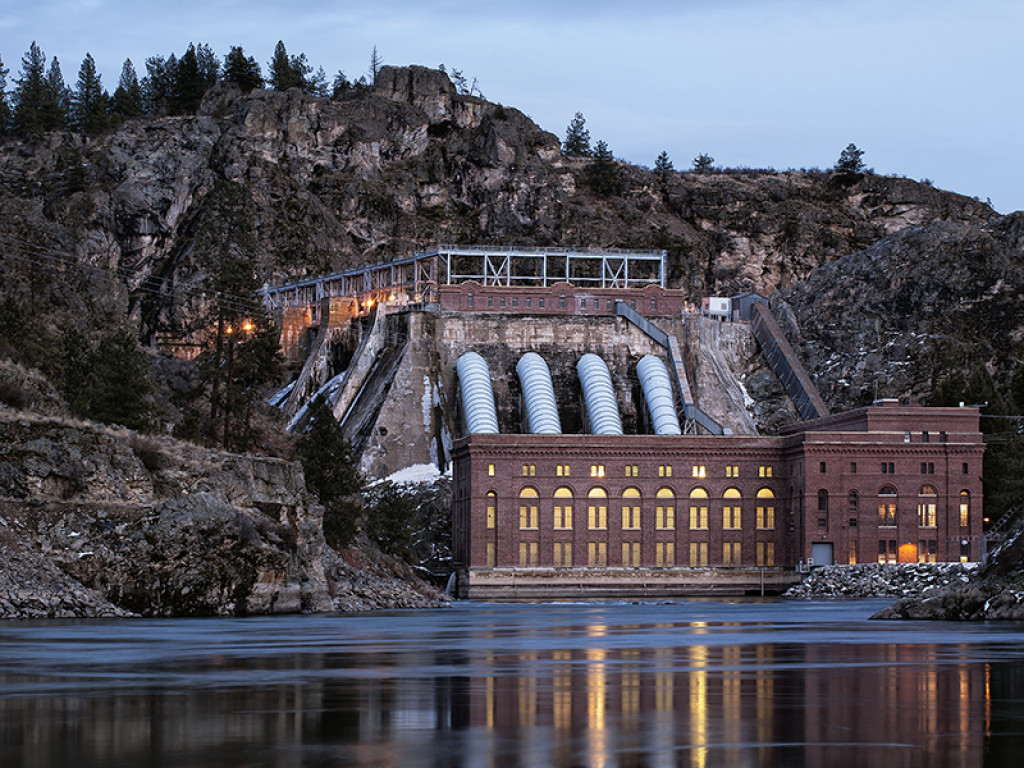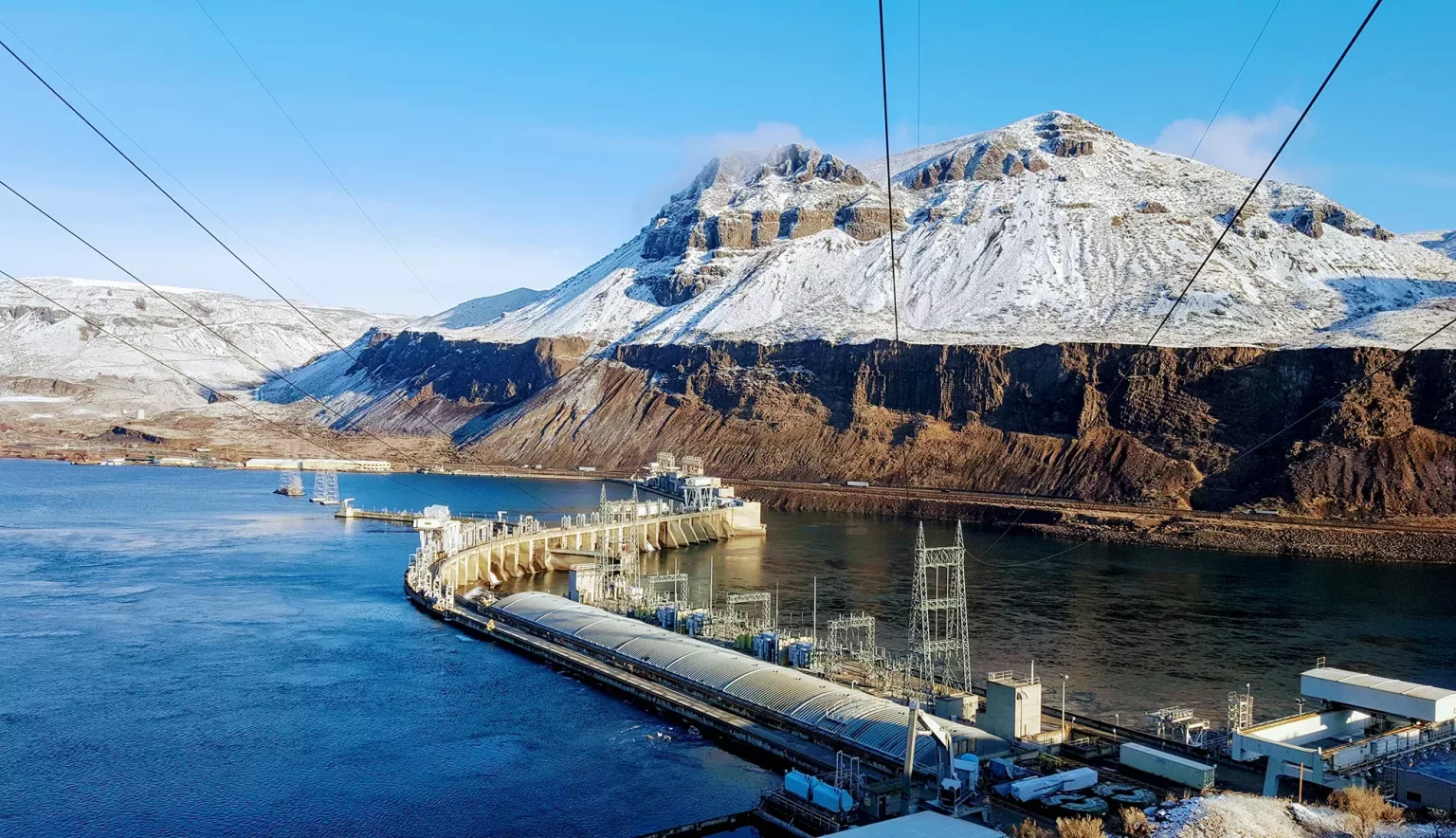Key to a cleaner future, hydropower is at the forefront of the renewable energy space. We speak to executive members of GE Hydro Solutions, and discuss the company’s drive towards the energy transition.
INTRODUCTION
Renewable energy is an ever-growing space, and one critical to the health and betterment of the planet.
In the US, key companies forge the path ahead in areas such as solar, wind and hydropower, facilitating greener energy solutions for Americans all over the country.
“It is definitely a very exciting moment. We met with all the industry players in Washington DC earlier this year and the consensus is that hydropower is gaining real momentum,” introduces Romain Pellegrino, General Manager North America at GE Hydro Solutions. “Indeed, hydropower is uniquely positioned to support the energy transition as it provides baseload renewable power that is dispatchable and local. But hydropower also provides the flexibility and the long-term energy storage that is needed to stabilize and optimize electrical grids with a growing amount of intermittent energy such as wind and solar.”
According to Pellegrino, on the backdrop of these features, hydropower enables the integration of other renewables, and it is now widely understood that without hydropower, Net Zero cannot be achieved by 2050.
“Overall, we are lucky enough to have in the US and Canada respectively the third and fourth largest hydropower installed bases in the world, with a total of more than 180 gigawatts (GW),” he continues.
“Half of the units are 30 years old or more; hydropower plants are designed to operate safely and reliably for decades. Innovation has significantly improved the performance of the machines over the past decades. Retrofitting the existing plants and upgrading the electromechanical equipment is all that is needed to significantly increase the hydropower installed capacity while extending plant lifetime by another 50 years or more.”
ENERGY GIANT
GE Hydro Solutions is part of GE Renewable Energy, the $16 billion energy business (under the multinational conglomerate General Electric) offering one of the broadest portfolios in the renewable energy industry to provide end-to-end solutions for customers demanding reliable and affordable green power.
Combining onshore and offshore wind, blades, hydropower, energy storage, utility-scale solar, and grid solutions as well as hybrid renewables and digital services offerings, GE Renewable Energy has installed over 400 GW of clean renewable energy and equipped more than 90 percent of utilities worldwide with its grid solutions.
With nearly 40,000 employees present in more than 80 countries, GE Renewable Energy creates value for customers seeking to power the world with affordable, reliable and sustainable green electricity.
“GE Hydro Solutions is one of the key players in the clean energy transition,” Pellegrino tells us. “We believe that the combination of our extensive hydro and digital intelligence makes GE Renewable Energy well-suited to serve this intense and ongoing energy transition.”
Smarter and more connected, GE Renewable Energy’s hydro plants no longer just generate power; they store it and deliver it to the grid with an unmatched level of predictability, flexibility and efficiency. As of today, GE Hydro Solutions has equipped roughly 25 percent of the world’s hydro installed base, is a leader in hydro storage with more than 25 percent of globally installed bases, and has a broad portfolio from five megawatts (MW) to 850 MW power per unit.
“Our communities and policymakers are deepening their understanding, so we are excited to see hydropower getting back on the agenda of the energy transition,” Pellegrino adds. “The International Energy Agency (IEA) has confirmed that we will need to double the global installed capacity of hydropower and the US is planning to support further hydropower development through the bipartisan infrastructure bill.
“Of course, not everything is perfect as we need more support from the policymakers to simplify the early stage of project development and we need to continue to explain how important hydropower is for our future. Yet, there is a clear momentum, and it is a very exciting time to be in the hydro industry in North America.”
HYDRO EXPERT
Pellegrino has worked in the hydropower industry for over 15 years and has had the privilege of working across areas including engineering, tendering and business operations.
During this time, he has experienced several leadership roles in engineering, as well as the positions of Technology Operation Director, Hydro Digital General Manager, and a number of engineering roles in the company’s French, Swiss and Brazilian units.
“Before being appointed General Manager of GE Hydro Solutions for the North America region, I led the company’s global technical tendering,” he says. “I hold a Master’s degree in engineering from the Grenoble (France) Institute of Technology and I’m a graduate of GE’s Accelerated Leadership Program.
“Growing up in Grenoble, a French city at the heart of the Isère region surrounded by mountains and qualified as the cradle of hydropower, it’s very hard not to get excited by hydropower. So, it was pretty obvious for me to dedicate part of my career to this industry. This year, Grenoble has been elected the EU Green Capital!”

ASSET EXTENSION
According to the International Hydropower Association (IHA), by 2030, over half the world’s existing hydropower capacity is expected to have undergone, or be due for, modernization. This is especially the case in the US where many hydropower plants are now reaching the end of their lifecycle.
“At GE Hydro Solutions, we are proud to support our customers when they need to extend the lifetime of their assets,” Pellegrino explains. “To give you two examples: two years ago, we signed a Design Build Agreement (DBA) with Chelan County PUD, a US public utility, to start the design process for the rehabilitation of eight bulb generating units at Rock Island Powerhouse 2 in the US.
“The units have a 40-year design life, and they are beginning to show signs of wear. This rehabilitation project aims at maintaining the overall plant equipment reliability for the next 40 years using innovative and environmentally friendly solutions, two important factors that guided the development of a new GE solution.”
As part of the rehabilitation, GE Renewable Energy will provide a new oil-free runner solution. Traditional runners use oil as lubricants; by avoiding this, the company’s design eliminates the risk of oil leaking into the water passing through the runners.
“The second example concerns the rehabilitation of four generators at the Long Lake Powerhouse, a site listed on the US National Register of Historic Places,” Pellegrino says. “Upon completion of the refurbishment project, the facility will have an installed capacity exceeding 100 MW. This amount of energy is sufficient to meet the demand for electricity of approximately 80,000 homes. The first modernized Long Lake unit is scheduled to go into operation at the end of 2024 and the last one in 2029.”

“Our mission is clear and simple: deliver on time and at quality hydropower equipment that will enable producing more affordable, flexible and reliable renewable energy”
Pascal Radue, President and CEO – Hydro, GE Renewable Energy
LATEST IN THE FIELD
GE Hydro is always looking towards the latest and best technology to help further the incorporation and use of renewables.
Last year, more than 33 percent of California’s total energy generation came from renewable sources. Solar power production in California booms at lunchtime and peters out in the evening, when the sun sets, and people turn on their lights.
To cover the shortfall between demand and production, the state’s thermal plants, which mostly lie idle in the day, come online at dusk. While generators are using more battery energy storage, the lithium-ion cells alone aren’t sufficient to do the job.
This is where Pumped Hydro Storage (PHS) comes in.
“There remains a robust debate about the best way to store the energy produced by wind turbines and solar panels when demand is low, and use it when the wind doesn’t blow, and the sun doesn’t shine,” Pascal Radue, President and CEO of Hydro for GE Renewable Energy, elaborates. “PHS is actually an existing way to store massive amounts of energy. The method uses excess electricity to pump water to a lake uphill when demand is low and then, when demand spikes, lets it run downhill through a power-generating turbine to a lower lake.”
For GE Hydro, this technology is innovative, well proven and reliable. A new report commissioned by the U.S. Department of Energy and produced by GE Research asserts that the addition of PHS to a large grid with a high proportion of renewables can cut the total cost of annual electricity production on the network by tens of millions of dollars, while remaining a profitable proposition for power producers and project developers alike. It also reduces dependency on fossil-fuel plants to step in when demand rises and renewables can’t keep up, which can cut millions of tons of carbon emissions.
“GWh-scale storage is needed for durations beyond two or four hours,” Radue adds. “The study calculated that a single 500 MW PHS plant in California with eight hours of storage could reduce annual electricity production costs on the western grid by up to 0.5 percent, or $62 million assuming the western grid is generating 50 percent of its annual energy from wind and solar by 2028, a scenario that is now looking more likely.”
A MISSION INTO THE FUTURE
Moving forward, GE Hydro Solutions is committed to supporting in every possible way the development of hydropower projects in North America. As a result, the company is engaged in significant growth to support the increasing demand of its clients.
“Our mission is clear and simple: deliver on time quality hydropower equipment that will enable the production of more affordable, flexible and reliable renewable energy,” Radue concludes. “We have to do so in an unprecedented challenging macro environment: high disruption in the global supply chain, shortages in the labor market, hyperinflation, change of policies toward more local content; facing these challenges, we benefit from our strong engineering and industrial footprint in the US and Canada, but also in the rest of the world to find the best scheme for each project.”






































